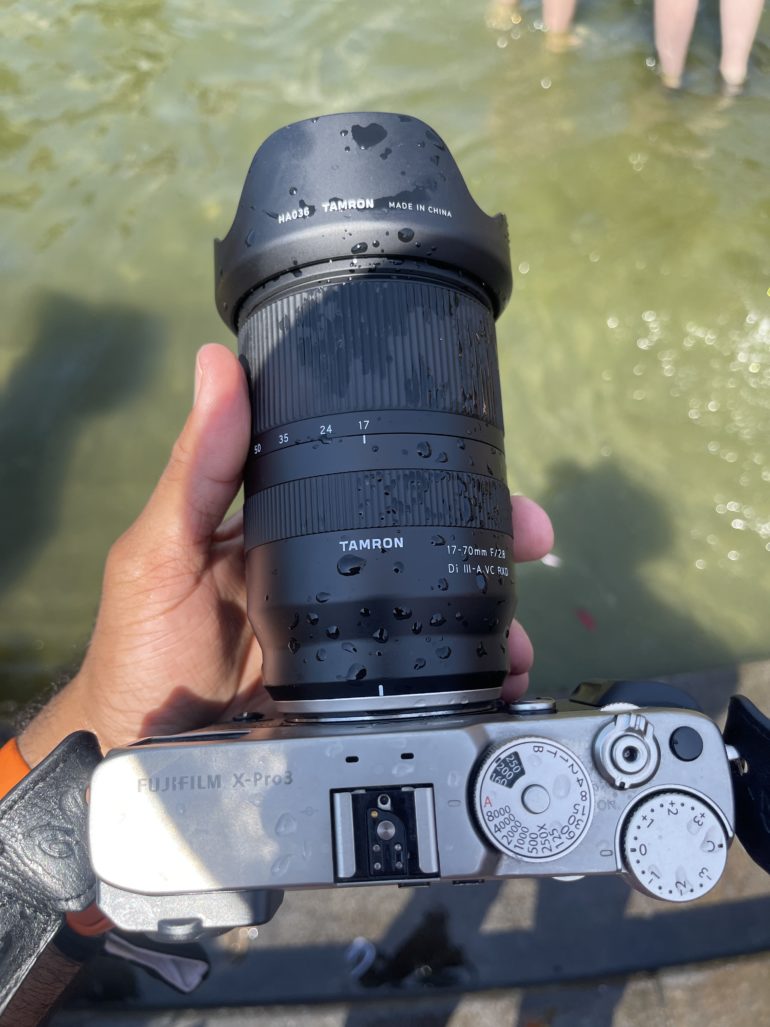The new mounts launched in the full-frame mirrorless boom of 2018 are finally beginning to see third-party autofocus lens options. And yet, as companies like Tamron announce its first Z Mount lens, third-party optics for the Canon RF system remain conspicuously absent. For a system with limited budget lenses for recently launched bodies like the EOS R10, third-party RF lenses could help fill a gaping hole in the lineup. Instead, reports suggest Canon is telling the few small companies making RF mount lenses to pull their products off the shelves.
Subscribers get some sweet perks and are automatically entered into contests!. Download our app for iOS, iPad, and Android and get no banner ads for $24.99/year.
Last week, a report indicated that Tamron wouldn’t be making RF mount lenses, just days after a separate report suggested that Chinese lens manufacturer Viltrox was told to pull their RF Mount lenses. Neither Canon nor Tamron has confirmed those reports. But, if Canon does prevent other brands from playing nice, the decision could very well throttle the growth of Canon’s mirrorless ecosystem.
The best third-party lenses often result when companies share autofocus algorithms. That’s why Sony E mount shooters have access to lenses from several brands and why many of them still have solid autofocus performance. In particular, Tamron (which Sony reportedly owns stock in) tends to perform pretty well. Sony already has a few years’ head start on full-frame mirrorless lenses. If Canon limits third-party lenses, it could hamstring the lens options. When photographers switch to different camera systems, lens options play a significant role in the decision-making process.
There are already several RF manual focus lenses from third parties such as LensBaby, Venus Optics, and Meyer Optik. But, autofocus RF lenses from third parties are rare. Autofocus lenses require communication between the lens and the body that manual focus lenses often skip. In addition to reports on Viltrox pulling its RF lenses, Samyang’s only autofocus RF mount lenses are reported to have suffered the same fate and are listed as sold out on its website. (The same lenses, however, are available under the Rokinon brand.)
Third-party lenses are often unique
Third-party lens companies are often extra motivated to release innovative products that draw photographers who are hesitant to purchase anything off-brand. Take Tamron, for example. Several of their recently announced lenses have non-traditional focal lengths that offer a wider or closer view in the same lens. Instead of the typical 10-400mm telephoto, Tamron launched a 50-400mm. Instead of a 24-70mm f2.8, Tamron offers a 17-70mm f2.8.
But besides the focal length, third-party lenses often have different character. Sigma, for example, tends to capture punchy, vibrant colors with its optics. Tamron lenses are often sharp but tend to embrace flare. Zeiss lenses are known for their bokeh. While each lens is a bit different, third-party lenses open up more options that may be a better fit for your style.
Third-party lenses sometimes offer features the major manufacturers don’t

Sometimes, third-party lenses just try to compete by offering similar features for a lower price. But, third-party choices will occasionally have something the big brand doesn’t. Canon, for example, only offers weather-sealing on the pricey (and lovely) L series. Tamron has several weather-resistant E-Mount lenses that are pretty affordable. If Tamron started making RF mount lenses, I suspect weather-sealing would be a feature that sets them apart from Canon’s budget-friendly lenses.
Third-party lenses are often more affordable
Of course, one of the big draws of third-party lenses is often the price point. Choosing a lens from a brand that doesn’t match the one on the front of your camera often comes with significant savings. Mix a unique feature like a wider zoom range or weather sealing with a lower price, and it’s easy to see why third-party lenses are such a big draw.
Canon’s RF line-up skews heavily towards pro-grade lenses. Canon’s L glass is often spectacular, but few choices fall under $1,000. If a budget camera body is going to be successful, there need to be budget lenses to go with it. Allowing third-party RF lenses could, in turn, boost the success of Canon’s entry-level camera bodies.
Many Canon pros are going to stick with the lovely L line-up. But by failing to support third-party lenses, Canon is snubbing hobbyists and beginners.
Yes, limiting third-party RF lenses would boost the sale of Canon’s own lenses. And, perhaps, as the company with the largest share of global camera sales, Canon could be secure enough to do things differently and be one of the few that limits third-party optics. After all, Fujifilm’s X Mount only recently opened to third-party autofocus lenses.
But, limiting third-party lenses could also dampen the sale of camera bodies. Because when investing in a camera system, a smart photographer looks at not just the body but the range of lenses available. If Sony, Nikon, Panasonic, and Leica can play nice, Canon may risk building a reputation as the bully on the playground.



Leave a Reply